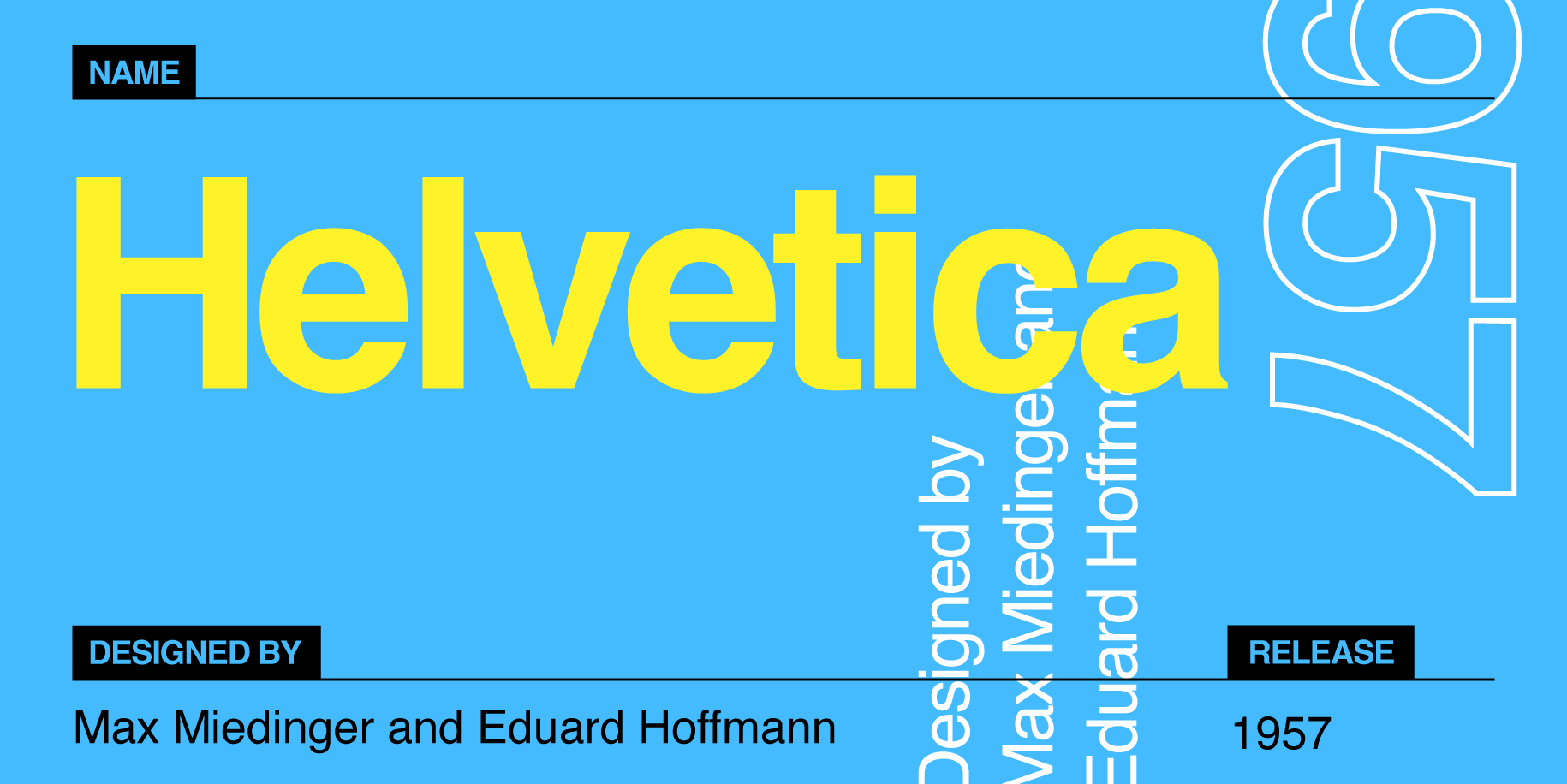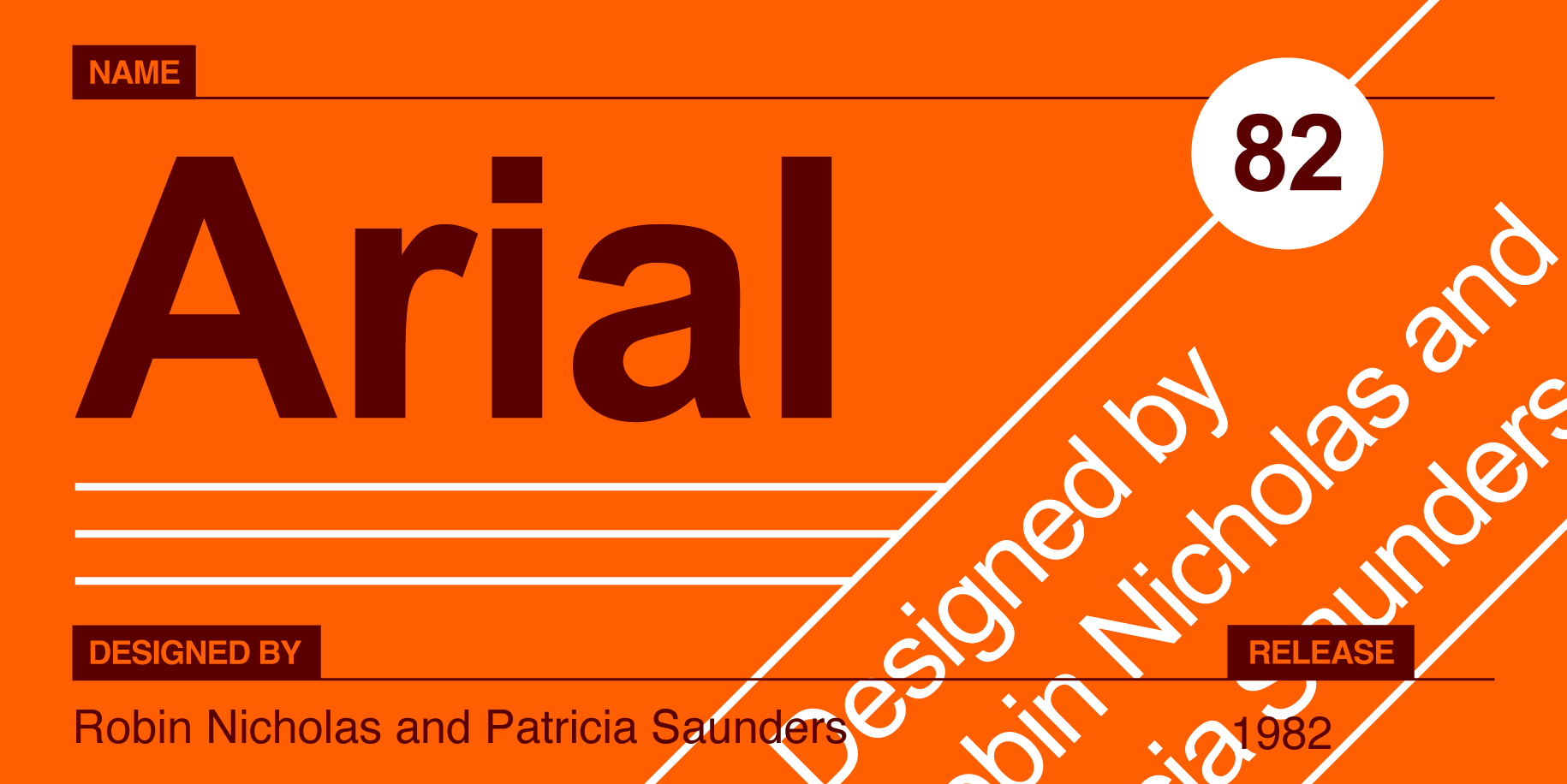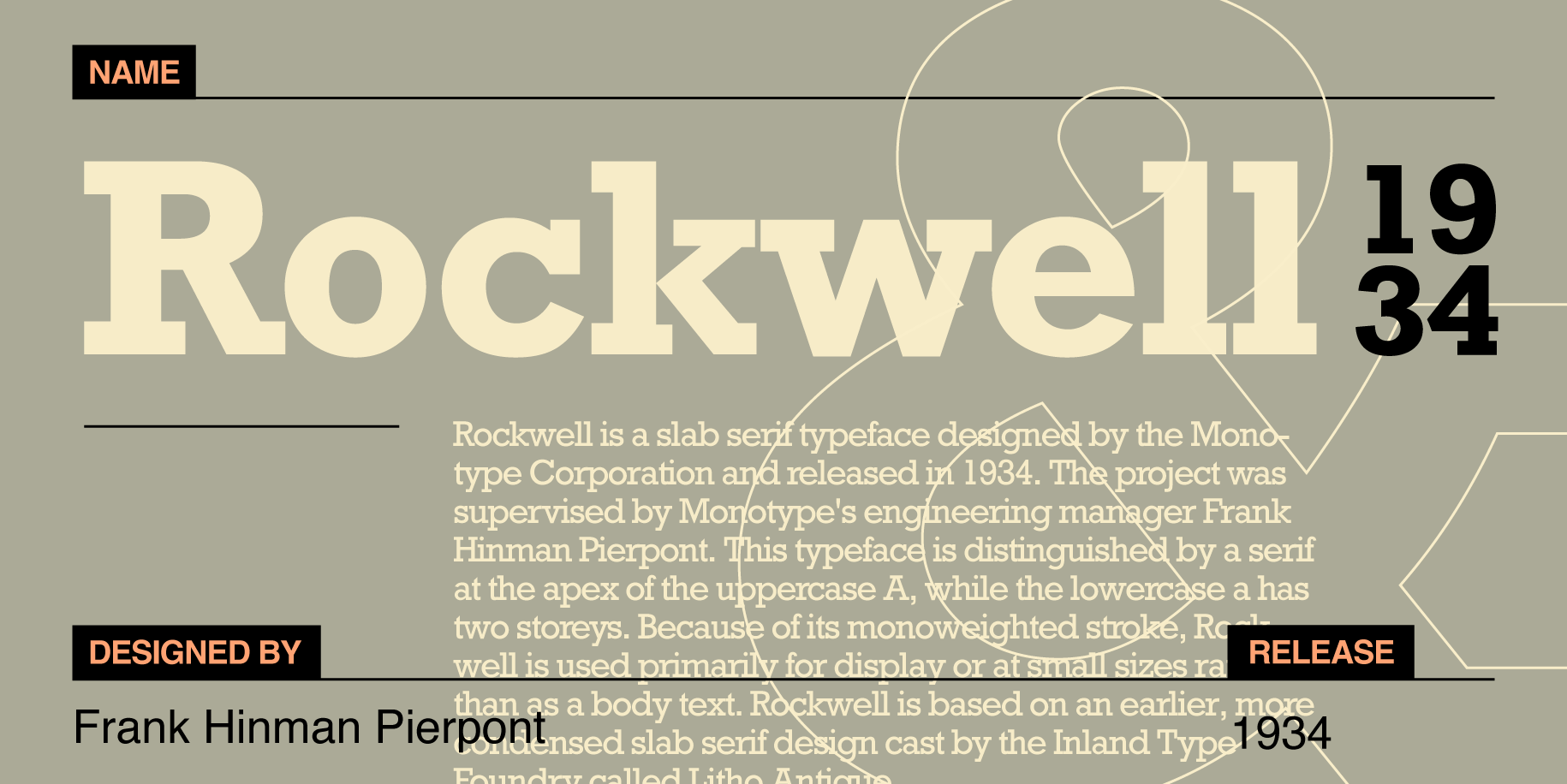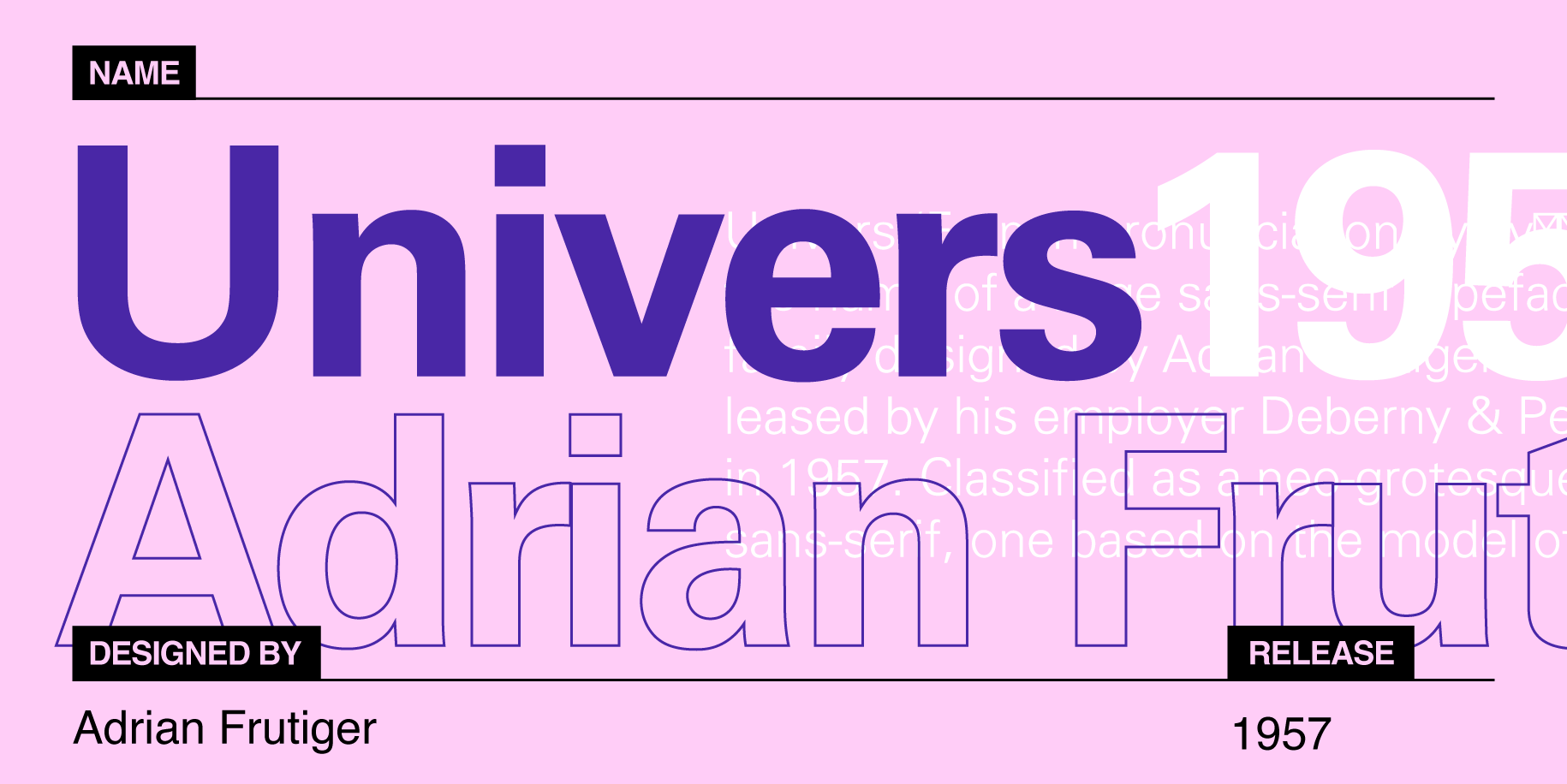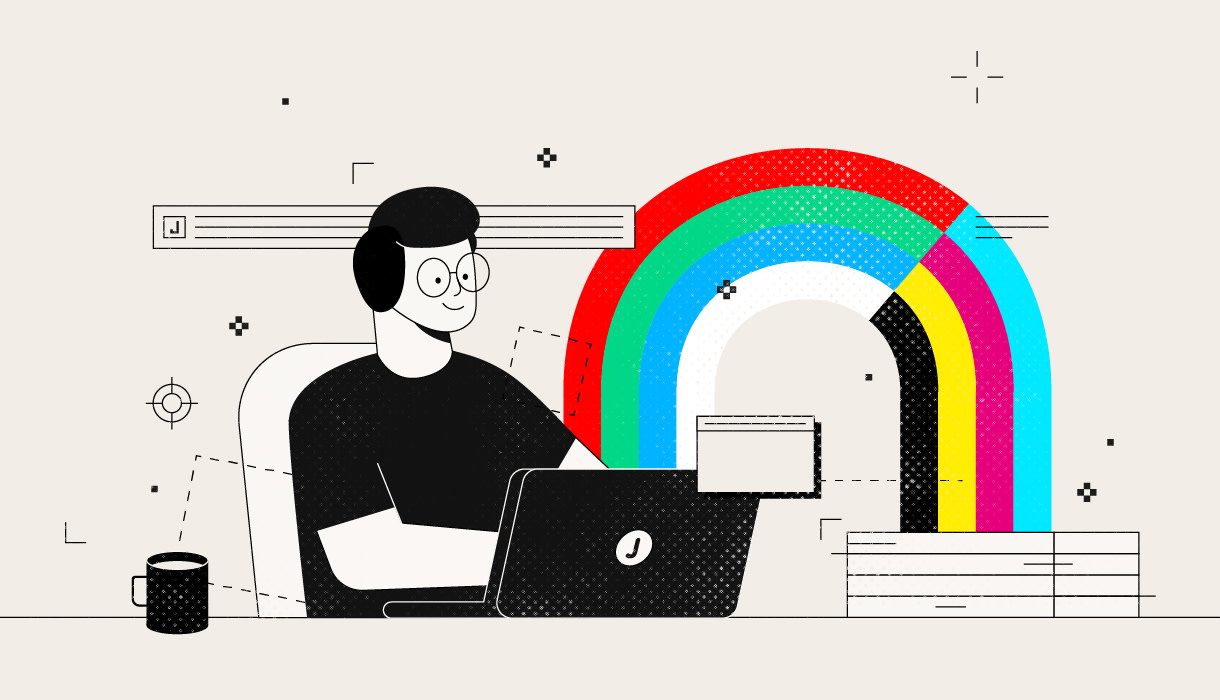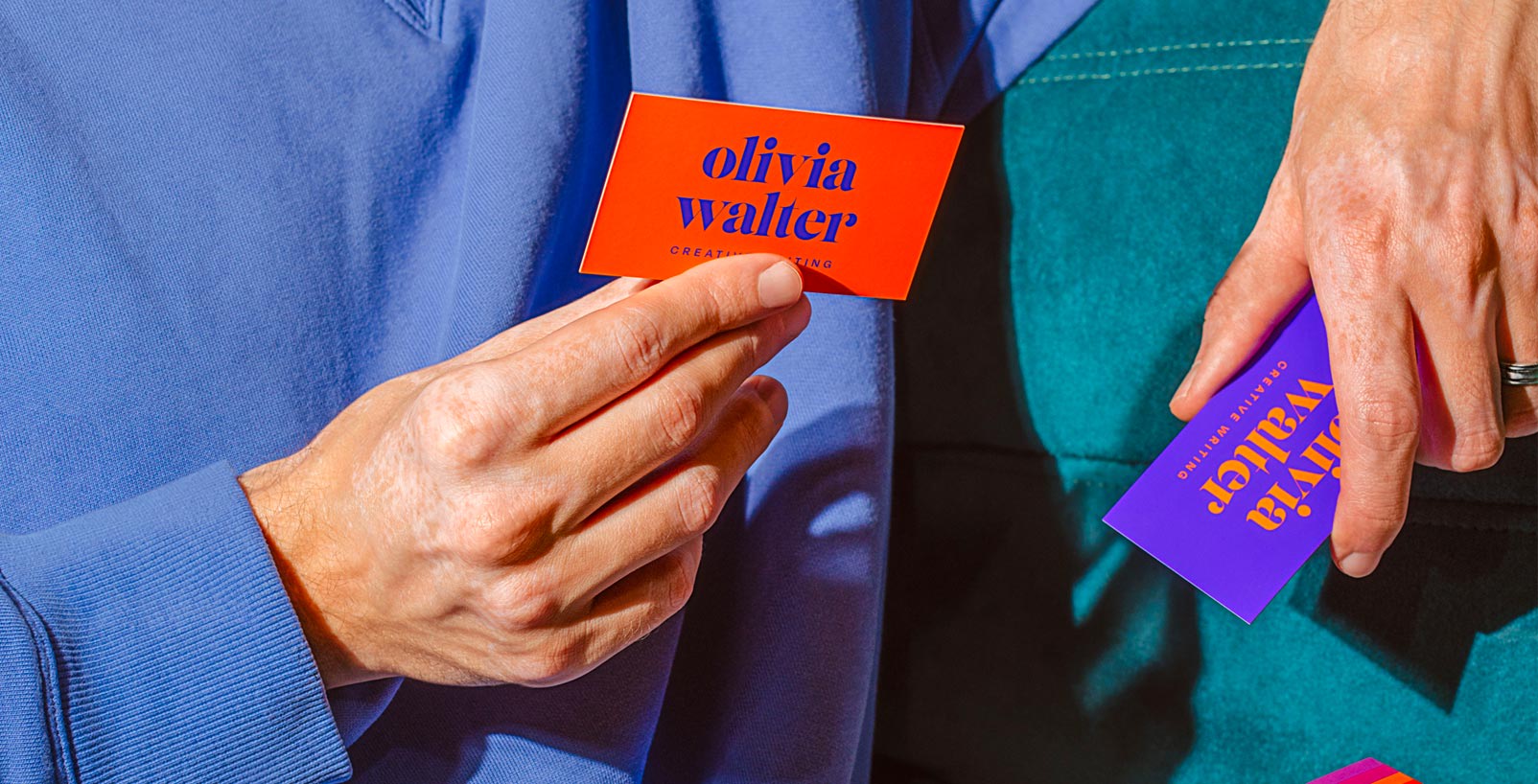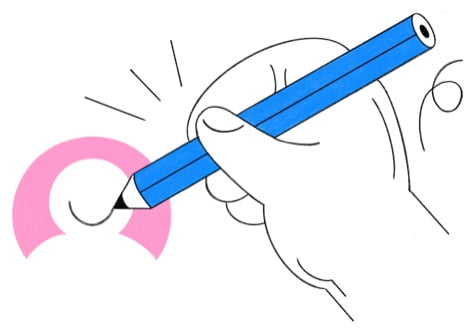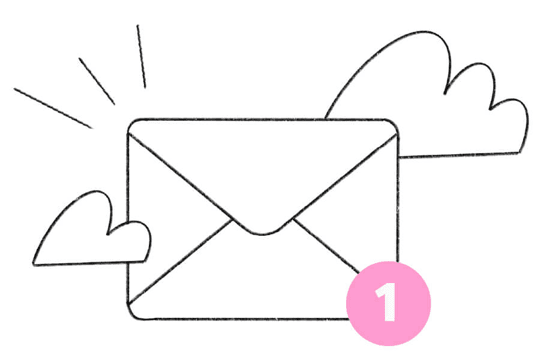Typography is such an important factor in design and communication in general. Because not only does the actual message have an important role in conveying a certain message, but what to think about the type of style that message is made with. You’ve probably seen those ‘fonts matters memes’ of the same text set in two completely different fonts. Turning an adorable ‘You’ll always be mine’ message in a cute, curly font into something completely creepy when it’s made with a style that would be used on a poster for a horror movie. Usually the differences aren’t that far apart but you get the point, typography matters. Like a lot.
Over centuries there have been some typefaces that stood the test of time and proven themselves to be one of the greatest typefaces ever made. We’re not ranking these based on taste as that is pretty subjective and different for each of us but what are those biggest, most influential typefaces from the last centuries that have shaped graphic design to what it is right now? Let’s have a look.
Helvetica
Without a doubt one of the biggest and beloved typefaces ever made, Helvetica (or Neue Haas Grotesk) is a sans-serif typeface developed in 1957 by type designers Max Miedinger and Eduard Hoffmann. It’s been influenced by the famous 19th century typeface Akzidenz-Grotesk and has evolved into multiple weights, widths and sizes as well as matching designs for a range of non-Latin alphabets. The list of most famous logos that are built with Helvetica is something truly remarkable and becomes pretty recognizable once you have a good look at Helvetica.
Jeep, Lufthansa, 3M, Panasonic, American Apparel, Target, JCPenny, Skype, The North Face and so many others. It has almost become a movement on its own as design students often see Helvetica as the synonym or alternative meaning of a sans-serif. Nowadays you could even be criticized by the design community for using Helvetica as it could look like a lack of effort and creativity but this typeface definitely deserves the top spot in this selection.
Garamond
Garamond is with a doubt one of the oldest typefaces being used today in modern design and software as it’s based on old roman lettering designs by Claude Garamond, sixteenth-century Parisian engraver. Nowadays it’s one of the most used typefaces for book printing and body text. So next time you’re reading a book, there’s a great chance that it’s being set in Garamond. Based on handwriting with a pen, serif or old-style typefaces tend to be more legible for larger amounts of text and are still very popular for book publishers around the world.
Dior, Abercrombie & Fitch, Google (before the redesign) and Macintosh are just a couple of large brands that have used Garamond for their logo but as we said this typeface is mostly used for body text and book printing and because Garamond has become the go-to typeface for these kind of publications we had to put this typeface at the start of this selection.
Futura
Another typeface that can be seen used by brands all over the world. Futura is a geometric sans-serif typeface designed by Paul Renner and released back in 1927. It has heavy Bauhaus influences and has become one of the biggest sans-serif typefaces ever. Over the years the Futura has grown to a large number of different styles and that’s one the reasons why it’s used by so many different brands and you’ll likely see something in Futura every single day. Talking about influence, am I right?
From the beautiful typographic interludes in Wes Anderson movies to dynamic Nike billboards with inspiring phrases set in Futura, this typeface family can do it all. And once you see names like IKEA, Nike, Absolut Vodka, Gillette, Red Bull, Louis Vuitton, Calvin Klein, Supreme, FedEx you’ll understand why Futura is such an influential typeface.
Bodoni
Classified as Didone or modern, Bodoni is heavily influenced by the typeface from 18th century businessman and type designer John Baskerville. Similarities between the typefaces Baskerville and Bodoni can be found in the heavy contrasts in the serif which creates a characteristic look that adds a certain amount of class to it. Still very loved by layout designers for magazines and newspapers all over the world due to its decorative letterforms and elegance.
Less used for modern logo design because of its ‘niche’ appearance but there are still quite a lot of famous brands that have chosen Bodoni to become their face of the brand. Does Nirvana, ZARA, Vogue and Burberry ring a bell? That’s also the beautiful thing about great fonts, they could last for centuries and still be used by the biggest brands in the world.
Arial
Arial is a sans-serif typeface that was designed in 1982, by Robin Nicholas and Patricia Saunders, for the Monotype Typography foundry. Anyone with Microsoft pc or a Mac will probably know this typeface very well as it has been included as a default font in their operating systems. Whenever you had to create a document in Word and Comic Sans was too informal but Times New Roman on the other hand was too serious, Arial would’ve been the perfect option. Ask any ‘non-designer’ to name a simple, modern font and Arial or Helvetica are probably one of the first they’ll mention.
Characters from Arial and Helvetica have the exact same width; the purpose of that is to allow a document that is designed in Helvetica to be displayed and printed with the intended line-breaks and page-breaks without owning a Helvetica license. Because of their almost identical appearances, both Arial and Helvetica have commonly been mistaken for one another.
Times New Roman
As we just mentioned, Times New Roman has also been included in most operating systems and because of that it has almost become a synonym for serif typefaces. Ask someone to name a typeface that looks ‘old’ they’ll probably name Times New Roman right away. It was commissioned by the British newspaper The Times back in 1931 and was designed by Stanley Morison and Victor Lardent.
Designed for newspaper printing with a high x-height, and short descenders to allow tight line spacing and a relatively condensed appearance. This way newspapers could place more text in the same amount of available space which is still one of the most important factors of using a typeface for newspapers. To this day Times New Roman is still very popular for book printing and is used by newspaper publishers around the world.
Verdana
Verdana was designed in 1996 by Matthew Carter and Thomas Rickner for Microsoft. It’s a humanist sans-serif typeface that has been installed on most desktop computers and was requested by designer Virginia Howlett of Microsoft's typography group and commissioned by Steve Ballmer, Microsoft’s CEO at the time. The name "Verdana" is based on “verdant” (something green), and Ana which is the name of Virginia Howlett's eldest daughter.
When it was released in 1996, Verdana was bundled with subsequent versions of the Windows operating system, as well as their Office and Internet Explorer software on Windows, classic Mac OS, and Mac OS X. Next to being the default font for many people around the world, it has been used in many publications as well like the IKEA catalog, Business Week, The Guardian and The New York Times to name a few.
Rockwell
Rockwell is what they call a slab serif typeface and was designed by Monotype and released in 1934. Back then, the project was supervised by Monotype's engineering manager Frank Hinman Pierpont. It’s a geometric slab-serif with all of its strokes appearing to be roughly the same width and its capital O roughly circular. This gives it a similar impression to common sans-serif designs like Franklin Gothic and Futura.
Over the years it has been used in a wide range of applications like storefronts, magazine headings, book covers, apparel design and much more. And because slab-serifs aren’t applicable to many different designs due to its heavy appearance, you’ll probably recognize Rockwell right away once you know how it looks. There aren’t a lot of slab-serif typefaces that are widely used like Rockwell so it has become the go-to choice whenever you want to use a typeface in this style.
Franklin Gothic
Franklin Gothic, the well-known sans-serif typeface was developed in 1902 by the type foundry American Type Founders under the lead of their head designer Morris Fuller Benton. The word “Gothic” was a contemporary term meaning sans-serif. The Franklin Gothic type family is particularly suitable for display text and headlines rather than for extended text due to its solid, heavy appearance.
Probably the best-known extension of Franklin Gothic is Victor Caruso's 1970s ITC Franklin Gothic, which expands the series to include book weights as well but is still not a prefered option for long body texts. An open source interpretation of the Franklin Gothic typeface has been made by Impallari Type and released as Libre Franklin, which is available at Google Fonts.
Univers
Another well-known and widely used sans-serif that has proven itself over the years, called Univers. A large sans-serif typeface family designed by the legendary Adrian Frutiger and released by Deberny & Peignot back in 1957. Classified as a neo-grotesque sans-serif and was notable for its availability in a wide range of weights and widths. Univers was one of the first typeface families to form a family of consistent, related designs by creating a matched range of styles and weights. This allowed documents to be created with one consistent typeface for all sorts of text, making it easier to set documents in sans-serif type without the need of selecting different typefaces for each type of text.
Univers was licensed and re-released by Monotype, Linotype, American Type Founders, IBM and others for phototypesetting, for metal type and reproduction by typewriter. It has been described as "probably the last major" release of a large family as metal type as well.
Widely used for Airport signing, the Walt Disney World road system, Audi instrument panels, keycaps on different keyboards, famous logos like UNICEF, eBay and so much more. Truly one of those great fonts that has shaped many designs we’ve seen since its release.
Frutiger
Frutiger is a humanist sans-serif typeface family and was designed and released in 1976 by legendary Swiss designer, Adrian Frutiger. It was intended to be clear and highly legible at a distance or at small text sizes and has been praised over the years by respected type designers for being “the best general typeface ever” and “the best choice for legibility in pretty much any situation”.
Frutiger is often used on pharmaceuticals, road signs and other signage like airports or train stations. Whenever a text must be as legible as possible for anyone that can read, Frutiger has been one of the most prefered options since its release and it just looks good and does the job.
Avenir
Last but definitely not least, Avenir. A geometric sans-serif typeface designed in 1987 by Adrian Frutiger and released in 1988 by Linotype. Not the first appearance of Adrian Frutiger in this selection and that’s one of the reasons why he is such a big figure in type design. The word avenir is French for "future" and as the name suggests, the typeface takes inspiration from the geometric style of sans-serif typefaces that took the circle as a basis, such as Erbar and Futura.
Frutiger described Avenir as his finest work:
"The quality of the draftsmanship – rather than the intellectual idea behind it – is my masterpiece. (...) It was the hardest typeface I have worked on in my life. Working on it, I always had human nature in mind. And what's crucial is that I developed the typeface alone, in peace and quiet – no drafting assistants, no-one was there. My personality is stamped upon it. I'm proud that I was able to create Avenir.”
Avenir was originally released in 1988 with three weights, each with a roman and an oblique version and was later expanded to six weights, each with a roman and an oblique version.
There you have it, a selection of 12 of the most influential typefaces in graphic design. And while there are many typefaces nowadays that would probably ‘work better’ to create a certain look that’s more from this time or to create something “more creative”, these typefaces played such a big role in how we started looking at design and the direction it took. So next time you’ll use that default typeface in your mail software, you’ll then know a bit more about that typeface and let you appreciate those a bit more.
Fonts are playing a huge role in graphic design and printing as well. We’ve received a lot of questions over the years about embedding your fonts and whether you need to convert them to outlines or not. So for those reasons, we created some in-depth articles for you to take a deeper dive in these topics and improve your workflow when it comes to font management.



